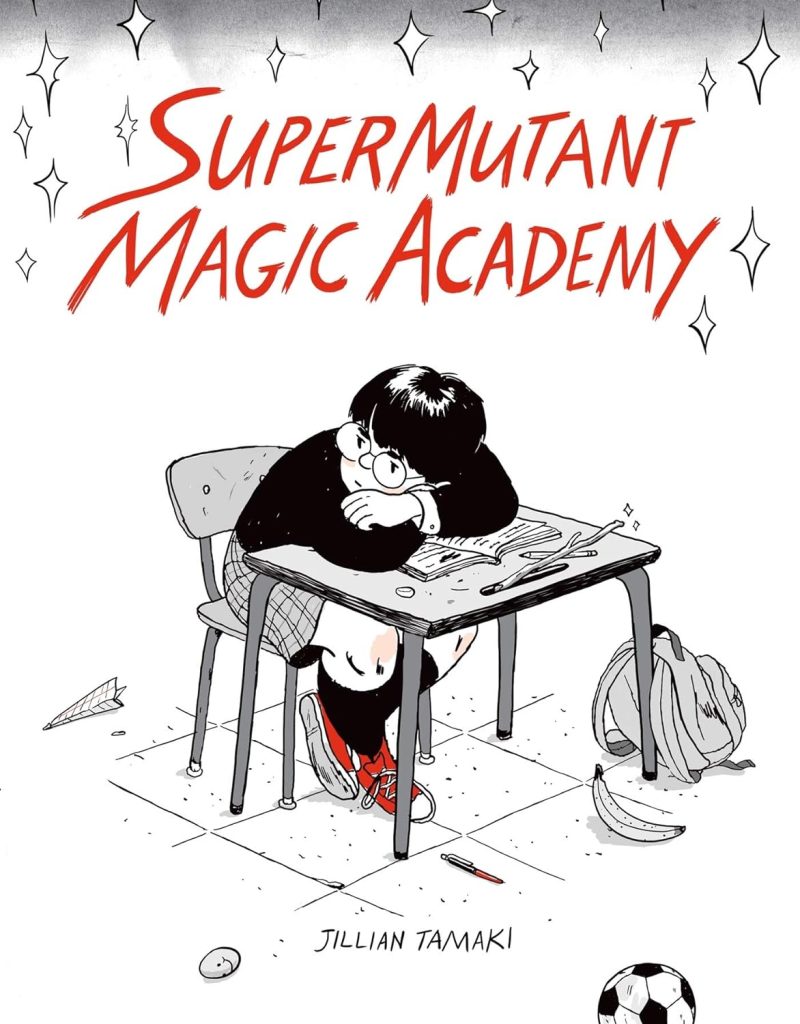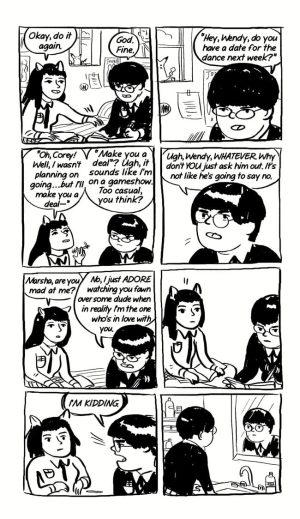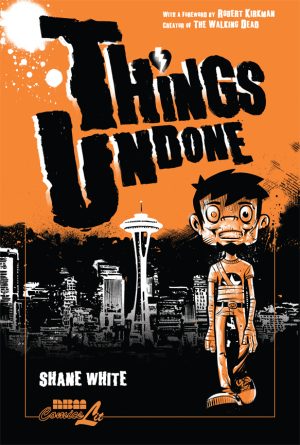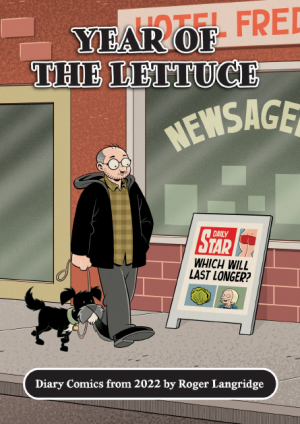Review by Ian Keogh
Many online reviews will tell you the short tagline for SuperMutant Magic Academy is X-Men meets Harry Potter, which actually suggests this searing indictment of school life perhaps hasn’t been read in full. Also, unlike the supposed combined influences, this isn’t a graphic novel, but a collection of single page strips, and unlike Harry Potter or the X-Men the pupils aren’t constantly threatened by the forces of evil, just by their own weaknesses and insecurities. Finally, the title is as good as ironic, since although some characters don’t look entirely human, powers, super or magical are reserved for the occasional quick laugh, except for the absurdly powerful Everlasting Boy.
Jillian Tamaki originally issued SuperMutant Magic Academy online from 2010, so very early in her career. It means the art is rough in places, particularly at the start as she searches for a definitive style, but it confirms the arrival of a very smart and sophisticated writer incisively hacking at social attitudes and simultaneously able to knock out a poised gag strip. Those are both talents to be envious of, but where Tamaki scores even larger is with the visceral emotional material. Assuming the content is presented chronologically, anyone able to knock out the sample strip with fewer than twenty others under their belt is astonishing. There’s barely a member of the cast avoiding confrontation with a similar level of existential angst eventually, so the questioning of life means this isn’t the cheery dart aimed at a young adult audience that may be assumed.
While most characters begin as random, Tamaki solidifies a few from the start, such as the confident and confrontational Frances having an artistic statement for any occasion and the nihilistic ADHD of Trevor. Others like Wendy trying to see the good in everything grow into a personality as the strips progress, but all to a greater or lesser degree offer commentary on some irritating aspect of life. Tamaki can drop into incredibly bleak territory, but there’s no condescending here, no idealistic attempts to be inclusive. It’s life as it is for many high school students.
However, after a run of a dozen downbeat, but accurate strips, Tamaki will surprise with a piece of whimsy or a punchline the writer of a daily strip would kill for. From the shaky start the art improves rapidly, and what at first seems a struggle to find a style evolves into several equally viable forms. The sparing use of colour, most frequently for blood, is the most noticeable, but the variable thickness of line and occasional experiments with shading are a joyful recognition of possibilities. As such they confound the views expressed by the cast of being stuck in place.
The final forty pages are a novella taking place on Prom Night. Marsha’s long planned to avoid it, but her eventual companion proves surprising, and Tamaki takes everyone on an unpredictable revelatory journey. It’s a fine ending.
Clever manipulation of words and academic phrases coupled with heightened self-awareness takes SuperMutant Magic Academy an awful long way, and it’s rare to see an artist so obviously growing in confidence and stature during the course of a single collection.





